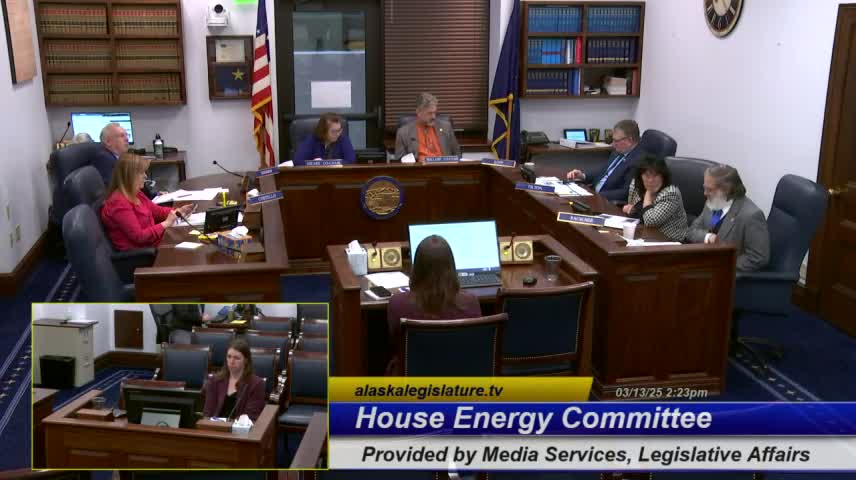Alaska energy costs highlight fuel dependency in remote communities
March 13, 2025 | 2025 Legislature Alaska, Alaska
This article was created by AI summarizing key points discussed. AI makes mistakes, so for full details and context, please refer to the video of the full meeting. Please report any errors so we can fix them. Report an error »

In the heart of Alaska, where the rugged landscape meets the challenges of energy supply, a recent government meeting shed light on the pressing issues surrounding energy costs and renewable initiatives. As representatives gathered, the stark realities of energy logistics in rural communities became a focal point of discussion.
One speaker highlighted the staggering costs associated with energy production, revealing that over half of the total energy expenses stem from purchasing diesel fuel. With annual revenues nearing $78 million, the breakdown showed that approximately $42 million is allocated solely for fuel. This financial strain is compounded by the vulnerability of supply chains, which are heavily reliant on weather conditions and seasonal changes. The speaker noted that even when fuel is transported by barge, the risks remain high, particularly as competition for resources dwindles.
In a bid to address these challenges, the speaker proudly announced the installation of renewable energy systems across microgrids, with 13 wind sites and 33 turbines now operational. These initiatives are already contributing power to 22 villages, marking a significant step towards reducing dependence on costly diesel fuel. However, the complexities of energy pricing remain, with costs varying significantly between communities based on their specific logistical needs.
The meeting also revealed that the average cost of electricity in the region hovers around 62 cents per kilowatt-hour, with some areas facing rates as high as $1 per kilowatt-hour due to the exorbitant costs of transporting fuel. In one community, the price of fuel soared to $12 per gallon, underscoring the financial burden faced by residents.
As the discussion progressed, it became clear that the path to sustainable energy in rural Alaska is fraught with challenges. With only one community accessible by road, the logistical hurdles of delivering fuel and maintaining energy systems are daunting. The meeting concluded with a call for continued investment in renewable energy solutions, emphasizing the need for innovative approaches to ensure reliable and affordable power for all Alaskans. The journey towards energy independence is just beginning, but the commitment to overcoming these obstacles is stronger than ever.
One speaker highlighted the staggering costs associated with energy production, revealing that over half of the total energy expenses stem from purchasing diesel fuel. With annual revenues nearing $78 million, the breakdown showed that approximately $42 million is allocated solely for fuel. This financial strain is compounded by the vulnerability of supply chains, which are heavily reliant on weather conditions and seasonal changes. The speaker noted that even when fuel is transported by barge, the risks remain high, particularly as competition for resources dwindles.
In a bid to address these challenges, the speaker proudly announced the installation of renewable energy systems across microgrids, with 13 wind sites and 33 turbines now operational. These initiatives are already contributing power to 22 villages, marking a significant step towards reducing dependence on costly diesel fuel. However, the complexities of energy pricing remain, with costs varying significantly between communities based on their specific logistical needs.
The meeting also revealed that the average cost of electricity in the region hovers around 62 cents per kilowatt-hour, with some areas facing rates as high as $1 per kilowatt-hour due to the exorbitant costs of transporting fuel. In one community, the price of fuel soared to $12 per gallon, underscoring the financial burden faced by residents.
As the discussion progressed, it became clear that the path to sustainable energy in rural Alaska is fraught with challenges. With only one community accessible by road, the logistical hurdles of delivering fuel and maintaining energy systems are daunting. The meeting concluded with a call for continued investment in renewable energy solutions, emphasizing the need for innovative approaches to ensure reliable and affordable power for all Alaskans. The journey towards energy independence is just beginning, but the commitment to overcoming these obstacles is stronger than ever.
View full meeting
This article is based on a recent meeting—watch the full video and explore the complete transcript for deeper insights into the discussion.
View full meeting
